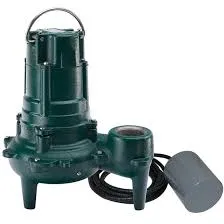Khmer
- Afrikaans
- Albanian
- Amharic
- Arabic
- Armenian
- Azerbaijani
- Basque
- Belarusian
- Bengali
- Bosnian
- Bulgarian
- Catalan
- Cebuano
- Corsican
- Croatian
- Czech
- Danish
- Dutch
- English
- Esperanto
- Estonian
- Finnish
- French
- Frisian
- Galician
- Georgian
- German
- Greek
- Gujarati
- Haitian Creole
- hausa
- hawaiian
- Hebrew
- Hindi
- Miao
- Hungarian
- Icelandic
- igbo
- Indonesian
- irish
- Italian
- Japanese
- Javanese
- Kannada
- kazakh
- Khmer
- Rwandese
- Korean
- Kurdish
- Kyrgyz
- Lao
- Latin
- Latvian
- Lithuanian
- Luxembourgish
- Macedonian
- Malgashi
- Malay
- Malayalam
- Maltese
- Maori
- Marathi
- Mongolian
- Myanmar
- Nepali
- Norwegian
- Norwegian
- Occitan
- Pashto
- Persian
- Polish
- Portuguese
- Punjabi
- Romanian
- Russian
- Samoan
- Scottish Gaelic
- Serbian
- Sesotho
- Shona
- Sindhi
- Sinhala
- Slovak
- Slovenian
- Somali
- Spanish
- Sundanese
- Swahili
- Swedish
- Tagalog
- Tajik
- Tamil
- Tatar
- Telugu
- Thai
- Turkish
- Turkmen
- Ukrainian
- Urdu
- Uighur
- Uzbek
- Vietnamese
- Welsh
- Bantu
- Yiddish
- Yoruba
- Zulu
Telephone: +86 13120555503
Email: frank@cypump.com
វិច្ឆិកា . 23, 2024 08:36 Back to list
sewer ejector pit
Understanding Sewer Ejector Pits An Essential Component of Wastewater Management
Sewer ejector pits, often known as sump pits or sewage ejector systems, are vital components in the management of wastewater, particularly in residential and commercial properties that sit below the main sewer line. These systems play a crucial role in the efficient movement of sewage and wastewater, ensuring that it reaches treatment facilities without causing backups or health hazards.
What Is a Sewer Ejector Pit?
A sewer ejector pit is essentially a below-ground reservoir designed to collect wastewater from fixtures that are located at a lower elevation than the main sewer line. This collection basin is equipped with a pump that ejects the sewage to a higher level, allowing it to flow into the municipal sewer system. The pump operates automatically and is activated by a float switch that detects when the wastewater has reached a certain level in the pit.
How Does It Work?
When wastewater enters the ejector pit, it accumulates until it reaches a predetermined level. At this point, the float switch triggers the sewage pump to activate. The pump then forces the sewage through discharge pipes, which carry it upward and into the main sewer line. This process prevents sewage from backing up into the home or building, which can lead to unsanitary conditions and extensive damage.
Most sewer ejector pits are designed to handle not just liquid waste but also solids. They are built to accommodate various types of wastewater, including that from toilets, washing machines, and sinks. The pumps used in these systems are heavy-duty and designed to handle solids and prevent clogging.
Importance of Sewer Ejector Pits
sewer ejector pit

1. Preventing Backups One of the primary functions of an ejector pit is to prevent sewer backups. Without a proper ejector system, sewage could overflow, leading to potential health risks and costly repairs.
2. Facilitating Waste Disposal In homes with basement bathrooms or laundry facilities, sewer ejector pits are indispensable. They allow for the effective disposal of waste from these lower-level rooms.
3. Cost-Effectiveness By managing wastewater efficiently, ejector pits save homeowners from the expenses associated with water damage and plumbing repairs that can result from sewage leaks or backups.
4. Environmental Protection Properly managed sewage systems help prevent contaminants from entering the groundwater and surrounding ecosystems, promoting better environmental health.
Maintenance Considerations
Maintaining a sewer ejector pit is essential for ensuring its longevity and effectiveness. Homeowners should regularly check the pump and pit for debris or clogs. It is advisable to have a professional inspect the system at least once a year to ensure everything is functioning correctly. Additionally, homeowners should avoid flushing non-biodegradable items down the toilet, as these can cause blockages and damage the pump.
Conclusion
Sewer ejector pits are crucial for effective wastewater management, especially in areas where plumbing fixtures are located below the sewer line. By understanding their function and importance, homeowners can better appreciate the role these systems play in maintaining sanitary conditions and protecting the environment. Regular maintenance and mindful usage will not only prolong the life of the system but also contribute to a healthier community overall.
-
Horizontal Split Case Pump with GPT-4 Turbo | High Efficiency
NewsAug.01,2025
-
ISG Series Pipeline Pump - Chi Yuan Pumps | High Efficiency, Durable Design
NewsAug.01,2025
-
Advanced Flue Gas Desulfurization Pump with GPT-4 Turbo | Durable & Efficient
NewsJul.31,2025
-
ISG Series Vertical Pipeline Pump - Chi Yuan Pumps | Advanced Hydraulic Design&Durable Construction
NewsJul.31,2025
-
ISG Series Vertical Pipeline Pump - Chi Yuan Pumps | Energy Efficient & Low Noise
NewsJul.31,2025
-
pipeline pump - Chi Yuan Pumps Co., LTD.|High Efficiency&Low Noise
NewsJul.31,2025










